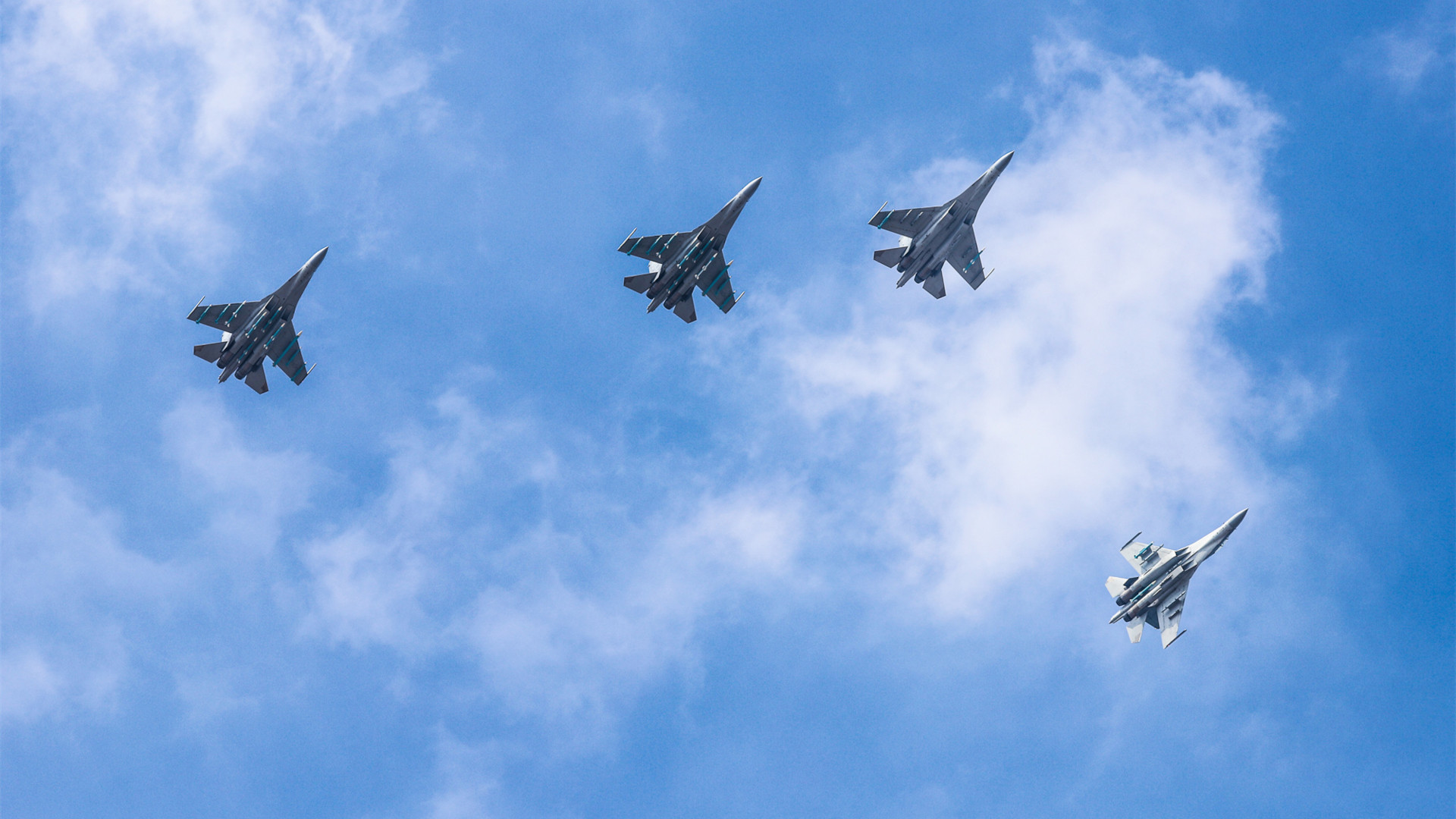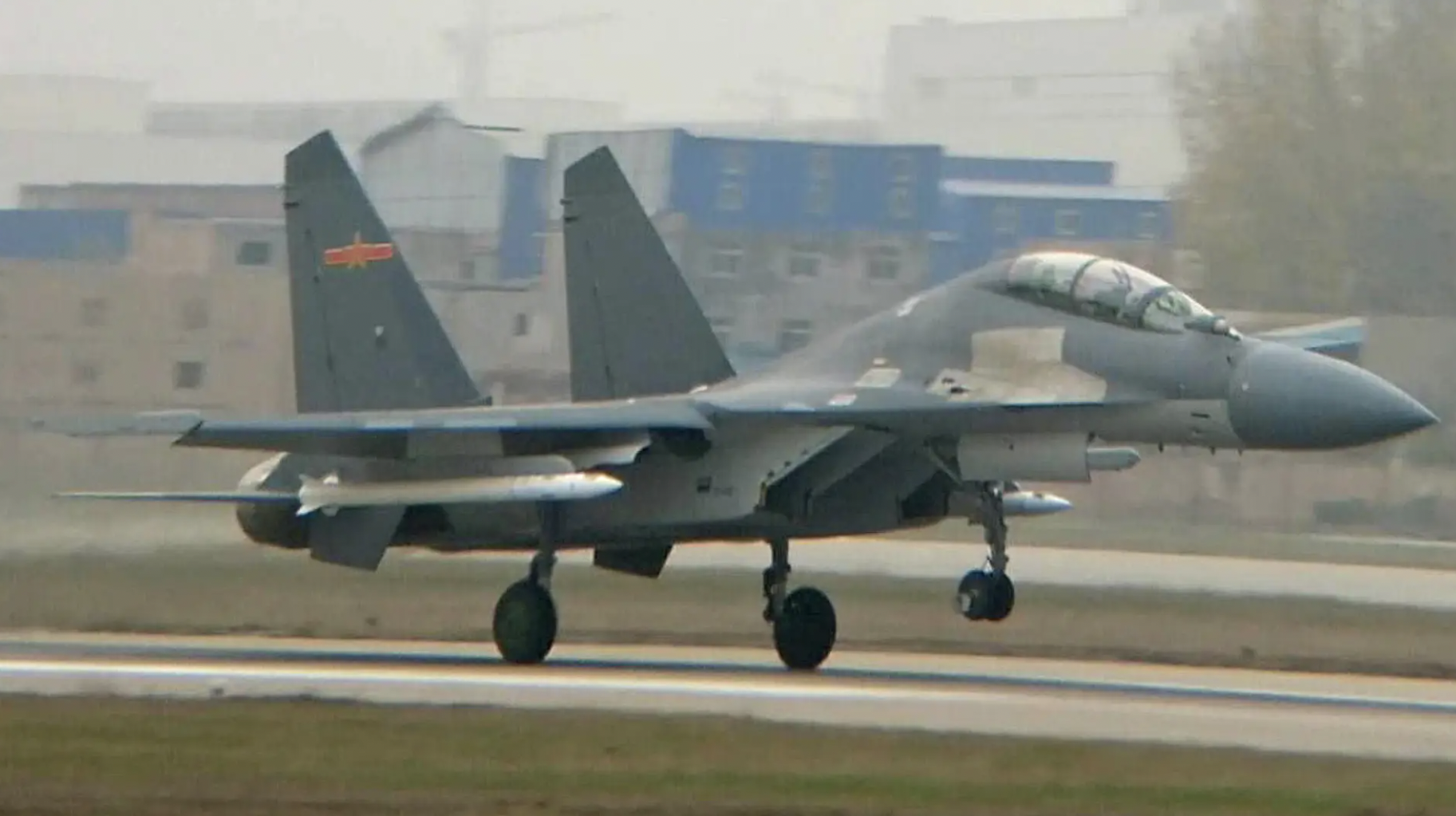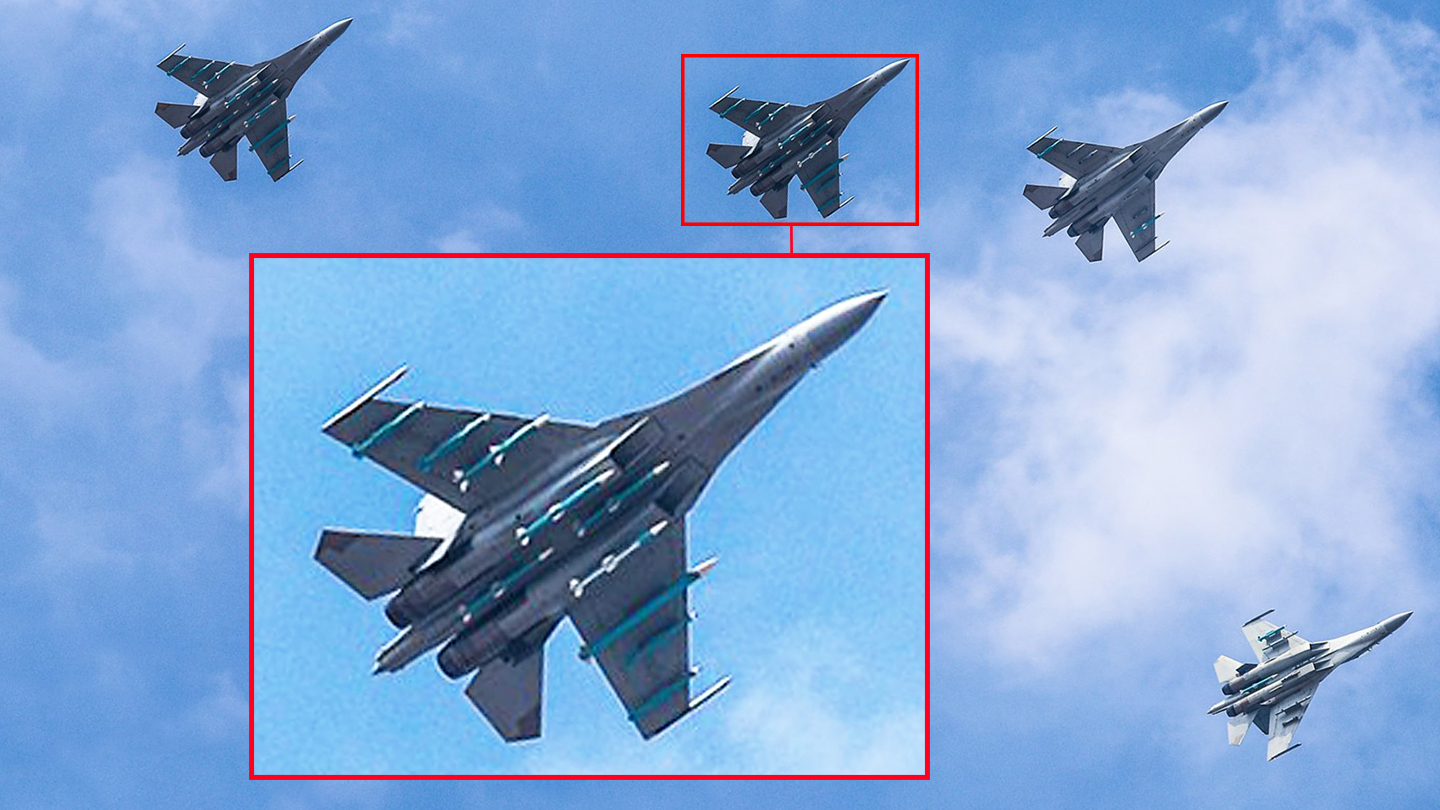China has released a photo of its J-16 Flanker derivatives tooled up with air-to-air missiles. The most impressive loadout shown out of a quartet (division) of J-16s in an overhead break pattern includes the huge PL-17 (also referred to as the PL-XX or PL-20) long-range air-to-air missile.
The image shows the formation of four jets with varying configurations of air-to-air missiles, two of which are particularly impressive. The fighters in question carry four PL-10s, one PL-12, four PL-15s, and one big PL-17. This loadout spans short to very long-range engagement envelopes, with the PL-17 providing unprecedented reach.
The caption to the photo, seen below, simply reads: “Fighter jets attached to an aviation brigade of the PLA Air Force fly in formation during the real-combat training on November 25, 2023. (Photo by Zhao Yutong).”

We first saw what is now dubbed, at least unofficially, the PL-17 seven years ago. Our analysis of the missile has not changed since then. In our latest guide to China’s air-to-air missiles, we state the following about the PL-17:
While the PL-15 is widely seen as the successor to the PL-12, there is also another AAM program currently under development, although details about it remain limited.
Normally known in the West as the PL-XX, this is thought to be a very long-range AAM, perhaps intended primarily to target high-value assets, like tankers and airborne early warning aircraft. Alternative designations could be PL-17 or PL-20, but they remain unconfirmed.
It seems likely that the project superseded plans for a ramjet-powered version of the PL-12, or a rival PL-21 also with a ramjet motor. The chosen new weapon instead opted for a dual-pulse rocket motor, which should have made it easier to master in technological terms.
The missile that resulted is significantly longer and broader than the PL-15, with a length of almost 20 feet. It uses a combination of four small tail fins and thrust-vectoring controls for maneuvering and is reported to have a range in excess of 186 miles, with a top speed of at least Mach 4. Guidance is thought to be achieved through a combination of a two-way datalink and an AESA seeker, which is said to be highly resistant to electronic countermeasures. With such long ranges involved, most engagements would be expected to involve targeting data provided by standoff assets, such as friendly airborne early warning aircraft, other aircraft closer to the target, ground-based radar or even satellites.

A possible optical window on the side of the nose of the missile could indicate an additional infrared seeker, which would make it far harder to defeat as it would be immune to heavy jamming in the terminal phase of the engagement. This is an established configuration, so it wouldn’t be surprising if it was adopted for such a large AAM concept.
The size of the PL-XX means that for now at least, it’s restricted to external carriage. The weapon was first identified on the J-16, and in November 2016 was successfully fired from this type. The AAM may well be compatible with other Flanker-series fighters and could potentially be carried externally on the J-20. However, the current status of the weapon is somewhat unclear, with testing apparently ongoing as of 2020 but no confirmation, so far, of official service entry.
The missile, along with other Chinese far-firing air-to-air missile developments, is a massive concern to the U.S. military. These worries have largely prompted the service to work at rapidly fielding the still highly classified AIM-260 Joint Advanced Tactical Missile, among other long-range air-to-air missile initiatives.
The photo showing two of its J-16s carrying the big missiles points to them being operational or close to operational. At the same time, this image was posted by the Chinese military and was meant to be seen by a Western audience. As such, the information warfare aspect of doing so cannot be dismissed.
Contact the author: Tyler@thedrive.com
